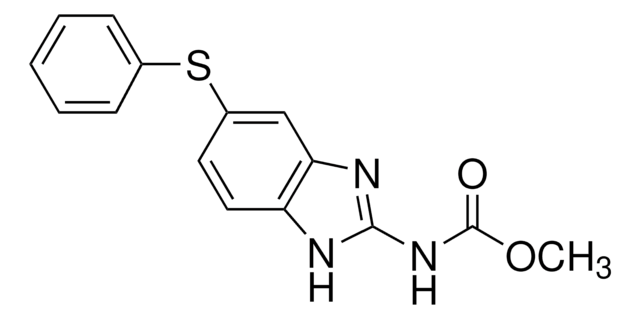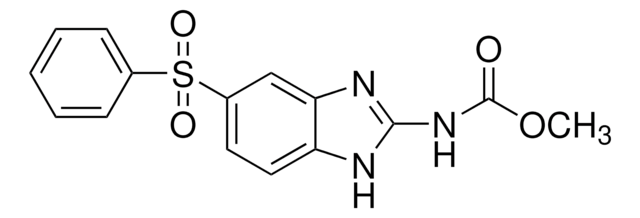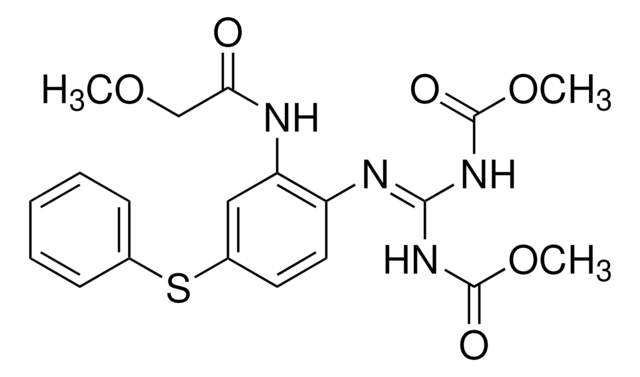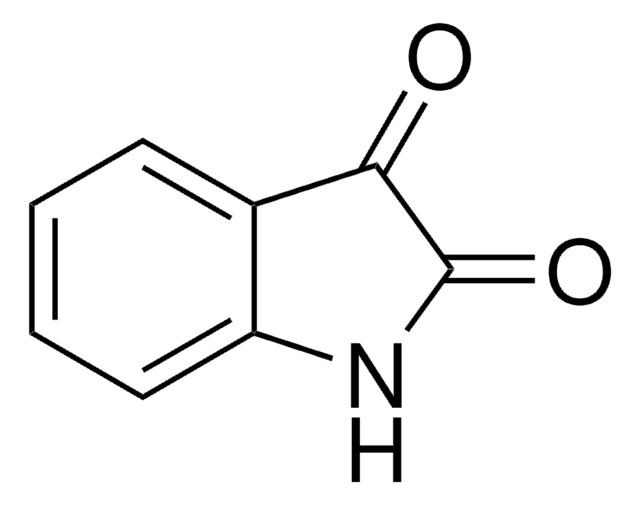Wichtige Dokumente
F5396
Fenbendazol
≥98%
Synonym(e):
5-(Phenylthio)-2-benzimidazolcarbaminsäure-methylester
About This Item
Empfohlene Produkte
Assay
≥98%
SMILES String
COC(=O)Nc1nc2cc(Sc3ccccc3)ccc2[nH]1
InChI
1S/C15H13N3O2S/c1-20-15(19)18-14-16-12-8-7-11(9-13(12)17-14)21-10-5-3-2-4-6-10/h2-9H,1H3,(H2,16,17,18,19)
InChIKey
HDDSHPAODJUKPD-UHFFFAOYSA-N
Suchen Sie nach ähnlichen Produkten? Aufrufen Leitfaden zum Produktvergleich
Allgemeine Beschreibung
Anwendung
- Fenbendazole in Veterinary Medicine: Investigated for efficacy against coccidicidal fungi in avian species, demonstrating broad-spectrum antiparasitic potential. Additionally, its environmental impact and pharmacokinetics reveal insights for sustainable agricultural practices and disease vector control. (Lozano et al., 2024), (Hachgenei et al., 2024), (Durden et al., 2023).
- Food safety and allergen detection: Fenbendazole′s implications in food safety are explored through quantitative PCR methods for detecting allergenic species in foods, underscoring the importance of accurate detection techniques in food industry compliance and safety standards (Costa et al., 2023).
- Analysis of antibiotic and anthelmintic residues: The occurrence and exposure evaluation of Fenbendazole residues in cow milk in China is studied, emphasizing the need for rigorous monitoring of food products to ensure public health safety (Chang et al., 2023).
Signalwort
Warning
H-Sätze
Gefahreneinstufungen
Aquatic Acute 1 - Aquatic Chronic 1 - Repr. 2 - STOT RE 2
Zielorgane
Liver,lymph node,Stomach,Nervous system
Lagerklassenschlüssel
11 - Combustible Solids
WGK
WGK 3
Persönliche Schutzausrüstung
Eyeshields, Gloves, type N95 (US)
Hier finden Sie alle aktuellen Versionen:
Besitzen Sie dieses Produkt bereits?
In der Dokumentenbibliothek finden Sie die Dokumentation zu den Produkten, die Sie kürzlich erworben haben.
Kunden haben sich ebenfalls angesehen
Unser Team von Wissenschaftlern verfügt über Erfahrung in allen Forschungsbereichen einschließlich Life Science, Materialwissenschaften, chemischer Synthese, Chromatographie, Analytik und vielen mehr..
Setzen Sie sich mit dem technischen Dienst in Verbindung.












